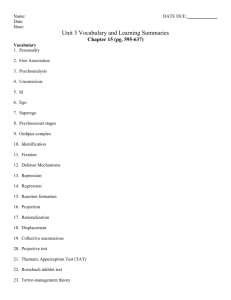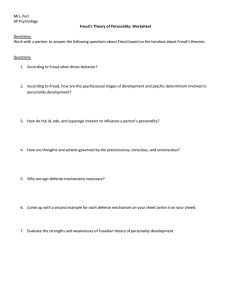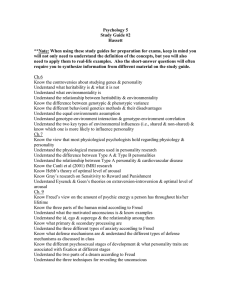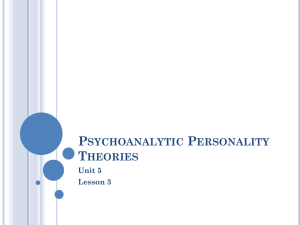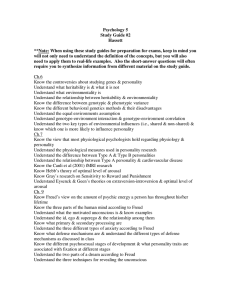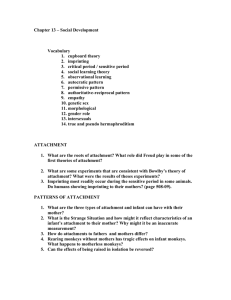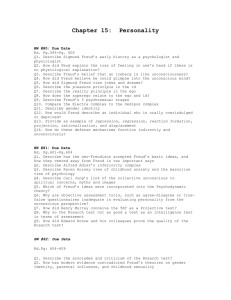PERSONALITY TEST study guide - APsych-PD
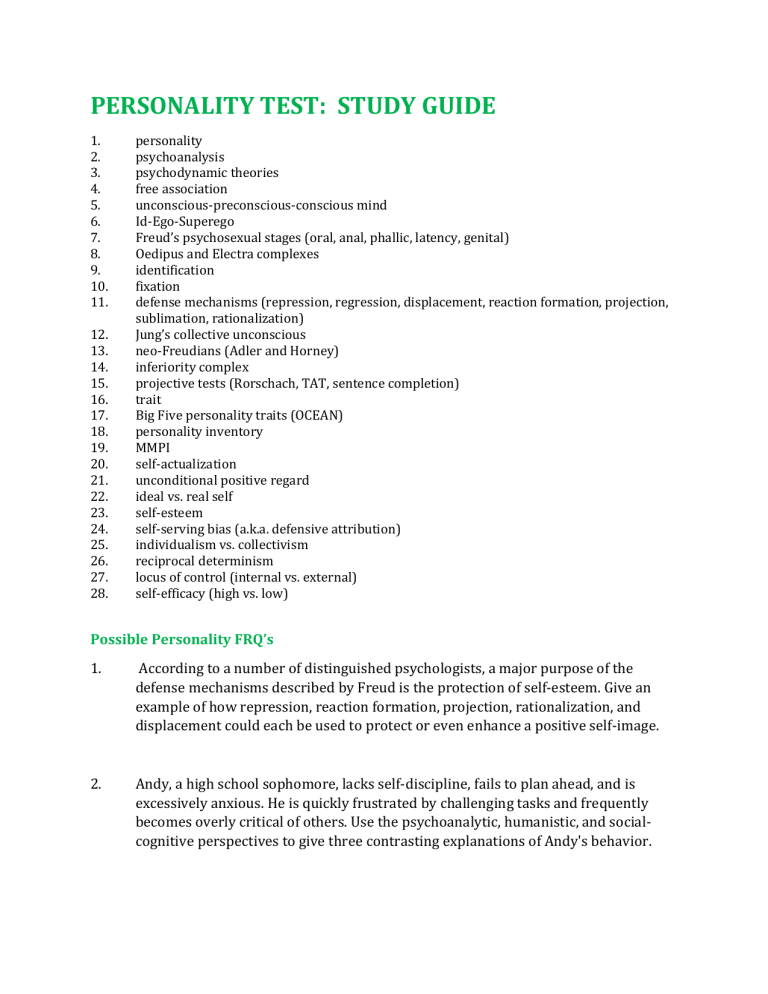
PERSONALITY TEST: STUDY GUIDE
1.
2.
3.
4.
5.
personality psychoanalysis psychodynamic theories free association unconscious-preconscious-conscious mind
6.
7.
8.
Id-Ego-Superego
Freud’s psychosexual stages (oral, anal, phallic, latency, genital)
Oedipus and Electra complexes
9.
identification
10.
fixation
11.
defense mechanisms (repression, regression, displacement, reaction formation, projection, sublimation, rationalization)
12.
Jung’s collective unconscious
13.
neo-Freudians (Adler and Horney)
14.
inferiority complex
15.
projective tests (Rorschach, TAT, sentence completion)
16.
trait
17.
Big Five personality traits (OCEAN)
18.
personality inventory
19.
MMPI
20.
self-actualization
21.
unconditional positive regard
22.
ideal vs. real self
23.
self-esteem
24.
self-serving bias (a.k.a. defensive attribution)
25.
individualism vs. collectivism
26.
reciprocal determinism
27.
locus of control (internal vs. external)
28.
self-efficacy (high vs. low)
Possible Personality FRQ’s
1.
According to a number of distinguished psychologists, a major purpose of the defense mechanisms described by Freud is the protection of self-esteem. Give an example of how repression, reaction formation, projection, rationalization, and displacement could each be used to protect or even enhance a positive self-image.
2.
Andy, a high school sophomore, lacks self-discipline, fails to plan ahead, and is excessively anxious. He is quickly frustrated by challenging tasks and frequently becomes overly critical of others. Use the psychoanalytic, humanistic, and socialcognitive perspectives to give three contrasting explanations of Andy's behavior.
